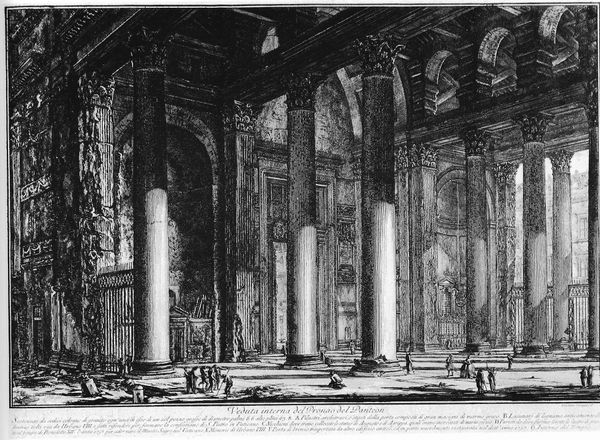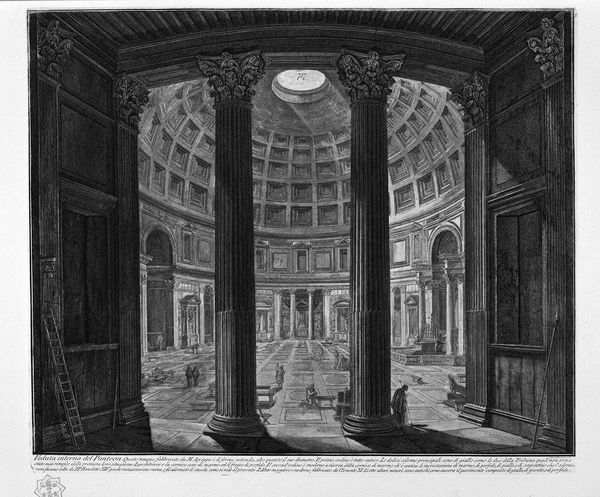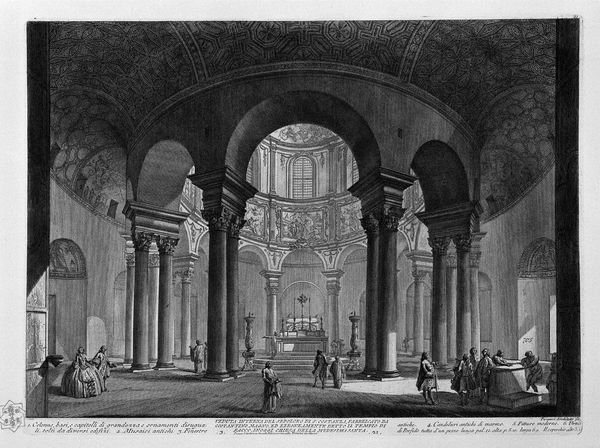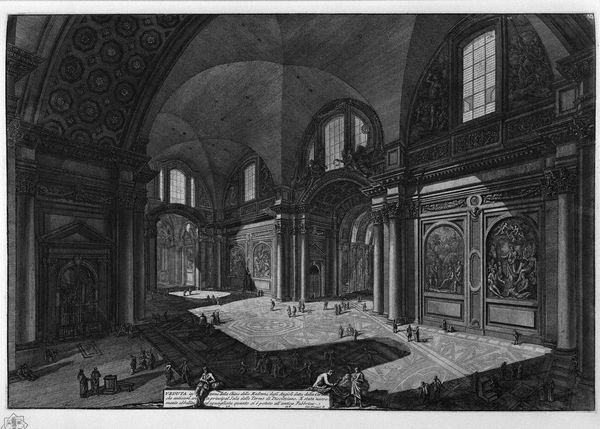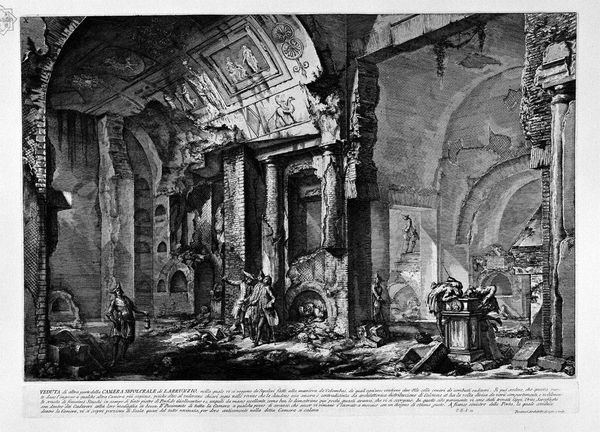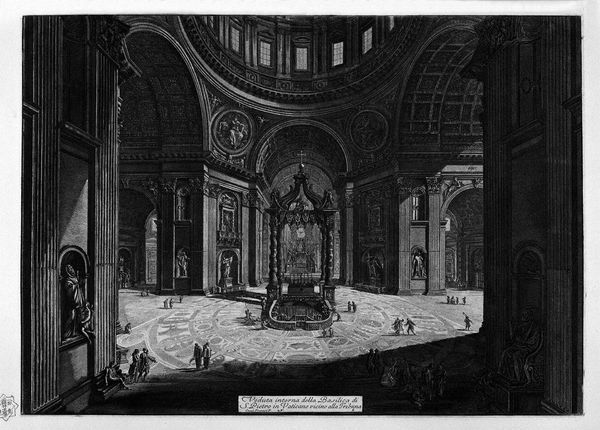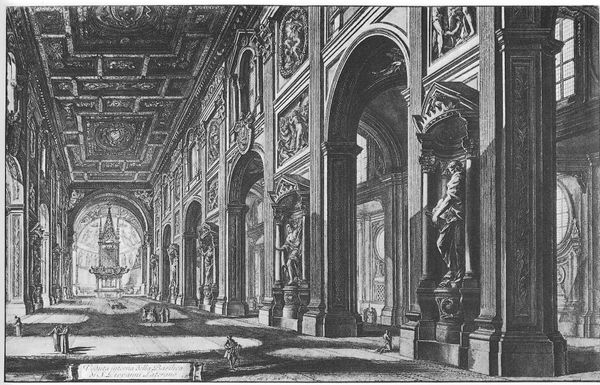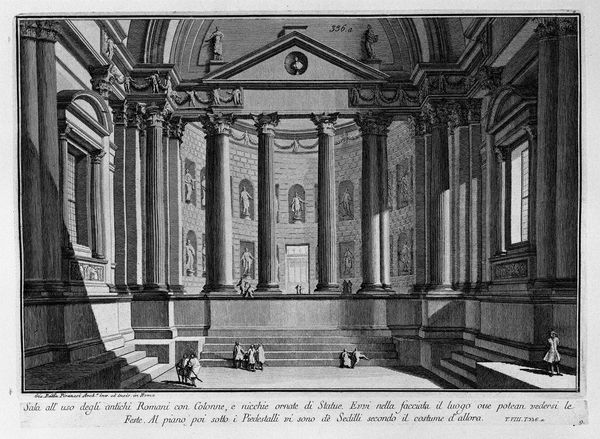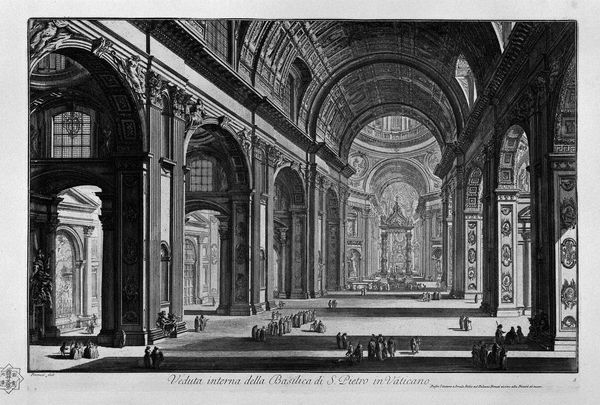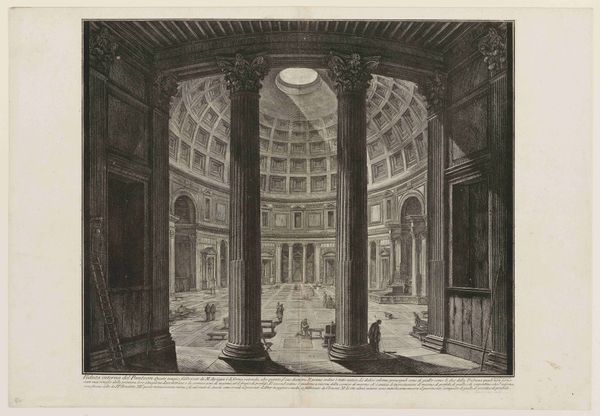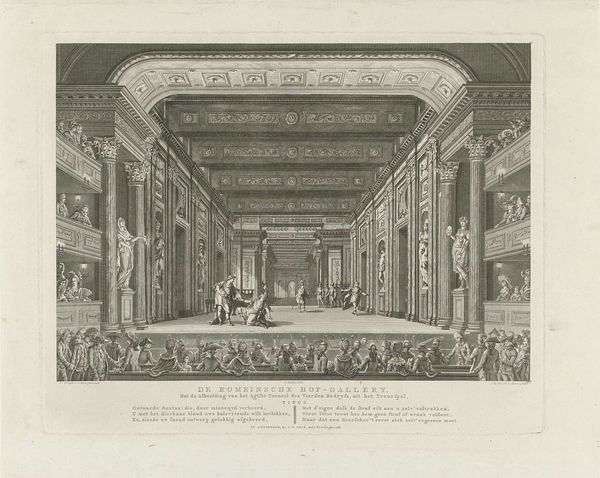
print, engraving, architecture
#
neoclacissism
# print
#
sculpture
#
landscape
#
perspective
#
charcoal drawing
#
geometric
#
line
#
cityscape
#
engraving
#
architecture
Copyright: Public domain
Editor: Here we have Piranesi's "Interior view of the pronaos of the Pantheon," a striking print rendered through engraving. The sheer scale depicted is awe-inspiring; what grabs me are those enormous columns dominating the space. What can you tell me about this print? Curator: Well, first, I'd ask us to consider: what does it *mean* to capture the Pantheon – a symbol of imperial Roman power subsequently appropriated by the Catholic Church – as Neoclassicism gains momentum? The Pantheon, here, isn't simply architecture; it embodies layers of historical and political power, visually reinforced by those dominating columns. Piranesi’s manipulation of perspective, typical of his *vedute*, intensifies the feeling of the sublime, but perhaps also subtly questions that very power by rendering it a spectacle for our gaze. How do you think this relates to the burgeoning sense of nationalism and the Grand Tour in the 18th century? Editor: I see what you mean. It is more than just a building. The way it's depicted almost feels...performative. Is it critiquing the grandeur? Curator: Precisely! Consider who had access to such spaces and representations historically. Who *didn’t*? And now, with printmaking, these images become more widely accessible, potentially democratizing access, even as they continue to project a narrative of dominance. The chiaroscuro, the dramatic contrast between light and shadow, serves not only to heighten the drama but also to emphasize particular architectural elements, framing our interpretation. Editor: So it's both a celebration and, potentially, a critique, using its own tools of grandeur against itself, reaching more people than ever before. It is an exciting tension. Curator: Exactly. This tension makes the print powerful, raising important questions about access, power, and representation. It is more than just an interior view; it is an engagement with the building's social and political implications.
Comments
No comments
Be the first to comment and join the conversation on the ultimate creative platform.
